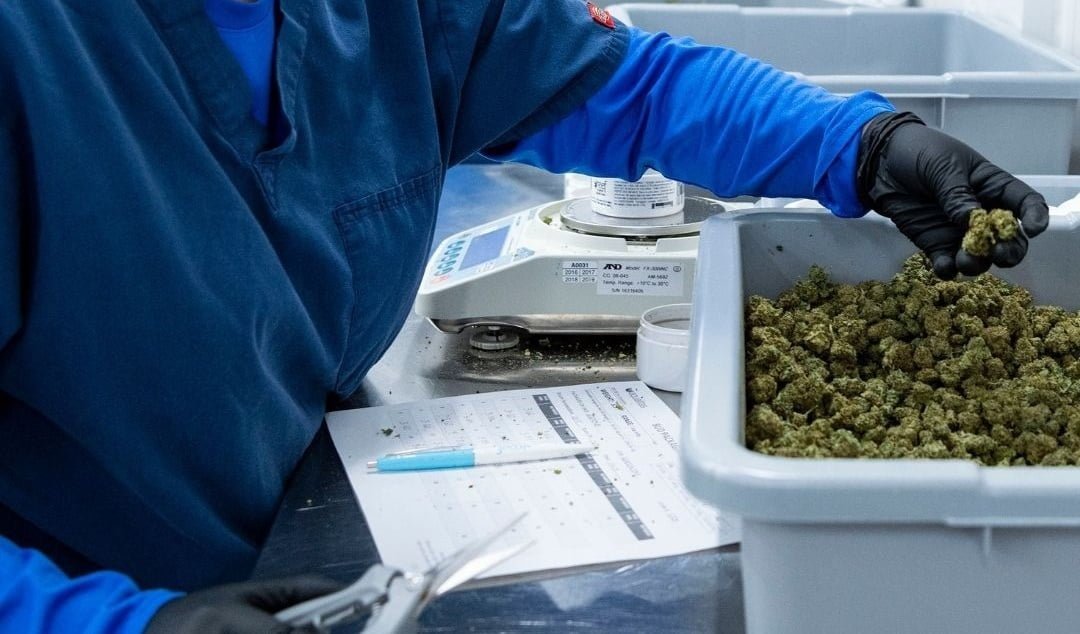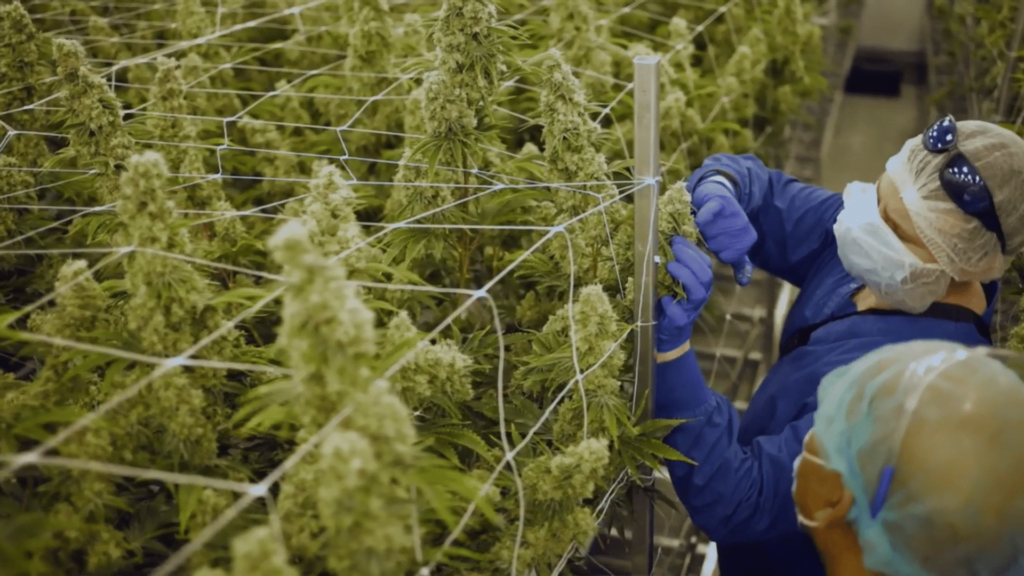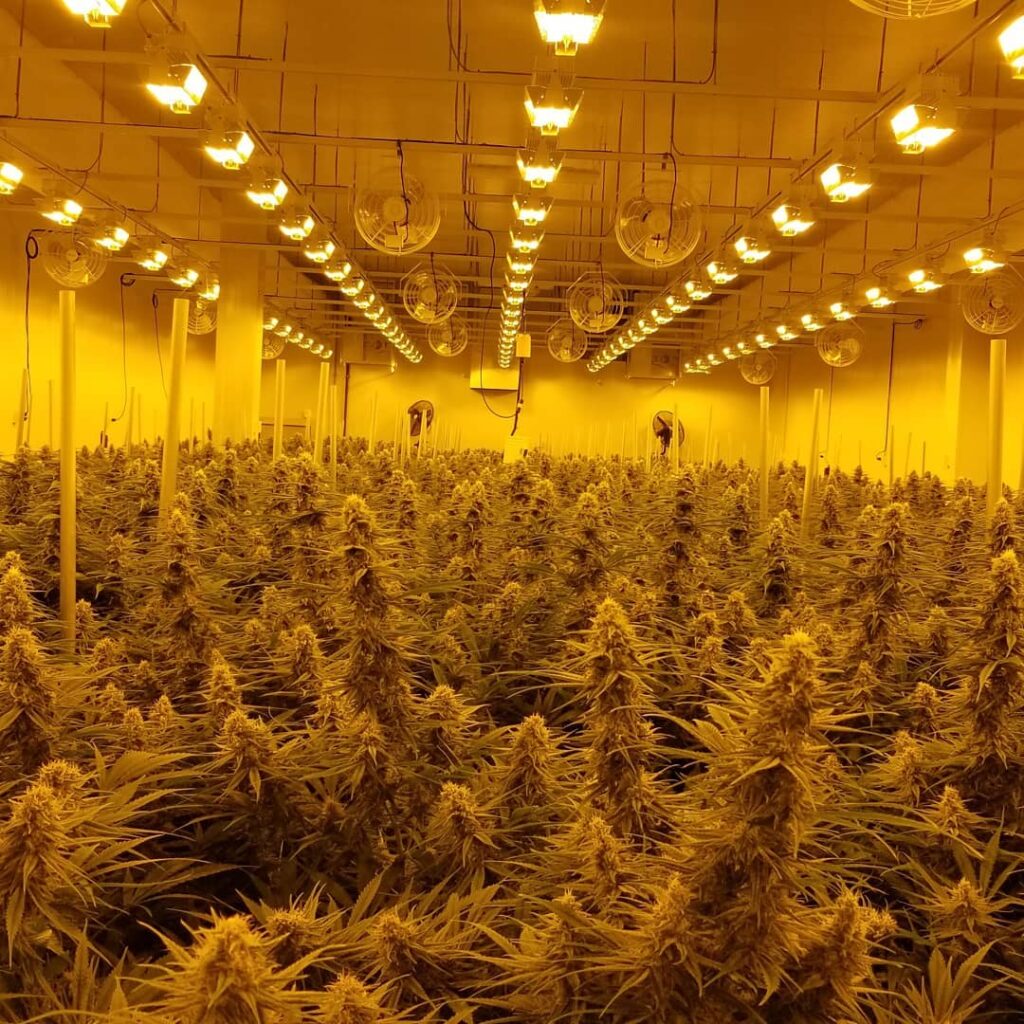15 Things to Keep in Mind for a Successful Collaboration as a Micro-Grower
Collaboration is an essential aspect in the success of the cannabis industry, so much so that “COLLABORATE” is one of the 3 main pillars in The Grower’s Source’s tagline. We dive deeper into the importance of collaboration as a micro-grower and the meaning of collaboration in this GROWUP panel session in The Grower’s Source Expo held January 27, 2021. The session included discussions on issues facing craft growers and micro cultivation producers in Canada such as distribution, costs, and the upcoming new designations for craft growers in the Ontario province.
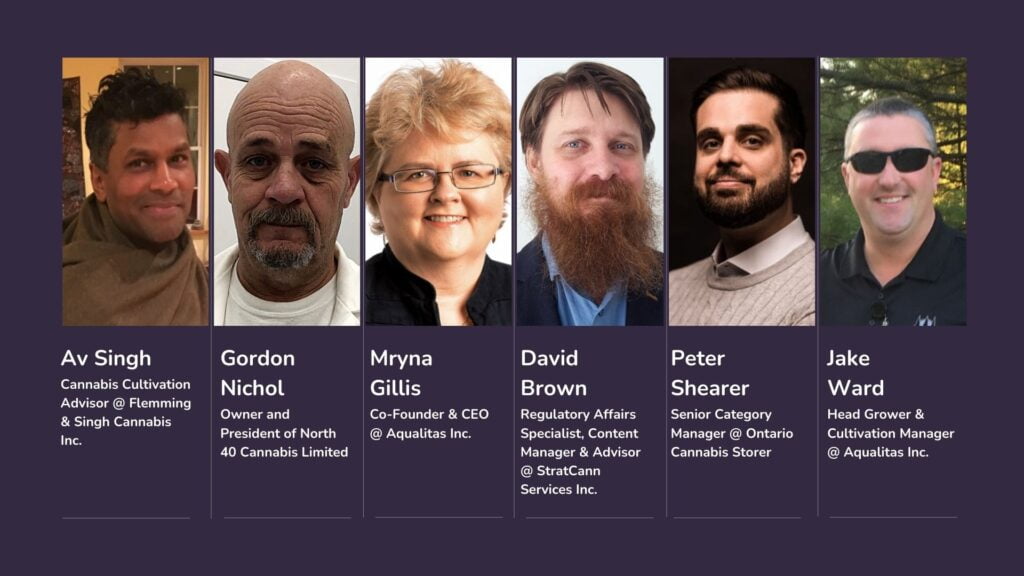
In this panel, we had Av Singh, Cannabis Cultivation Advisor @ Flemming & Singh Cannabis Inc, Grow Up Conference, as the emcee, Gordon Nichol, Owner and President of North 40 Cannabis Limited in Saskatchewan, David Brown, Regulatory Affairs Specialist, Content Manager & Advisor @ StratCann Services Inc., Myrna Gillis, Co-Founder & CEO @ Aqualitas Inc., an organic aquaponic cannabis facility in Nova Scotia, Jake Ward, Head Grower & Cultivation Manager @ Aqualitas Inc. and Canada’s Head Grower of the Year 2020, and Peter Shearer, formerly from the cannabis company Seven Acres and now Senior Category Manager at Ontario Cannabis Store.
With four experts in Canadian craft cannabis and valuable advisors in management, marketing, and related disciplines, we have gathered some valuable insights for the following:
- starting out as a grower
- cultivating teamwork in the workplace
- the opportunities and challenges of small-scale cultivation (micro cultivation, craft growing), and
- how growers and their partners can collaborate to achieve their common goals and solve their common problems
From these topics, we have listed below 15 tips for you to have successful collaboration as a micro-grower and as a team.
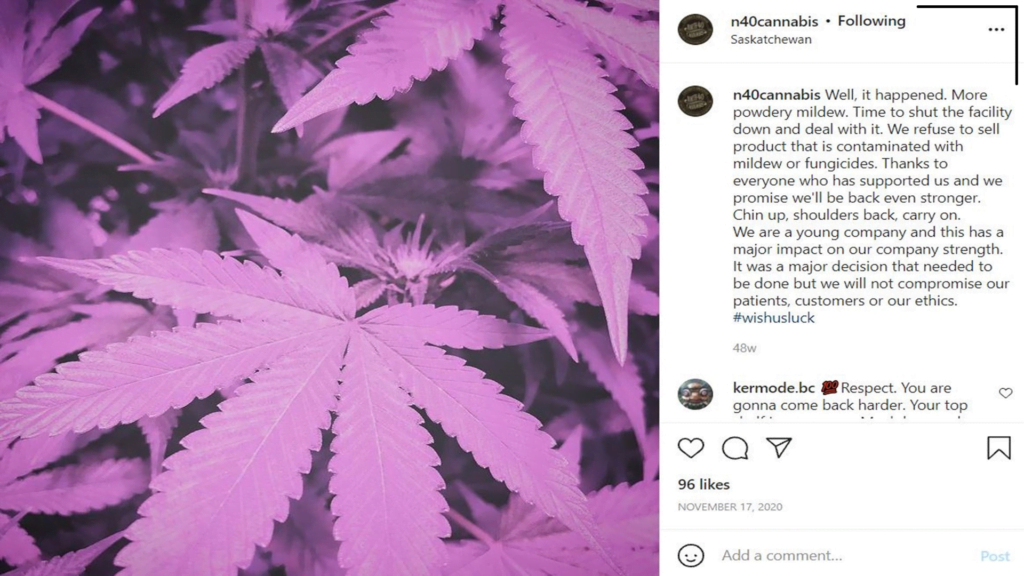
- Be ready for a rough start when venturing into cannabis production. As one of the first producers licensed for micro cultivation in Canada, Gordon Nichol gets asked a lot about how to get products to the market, especially by those just starting out. A novice in the cannabis industry should know that the journey is going to be rough. The market is busy, and there are a lot of big players. You bet it will be a tough competition. Thus, before going into the business, the new grower should at least know the cannabis plant and its flower from the inside out. Research and interviews would be beneficial before your start. The company depends on its grower to bring out a top-shelf, high-end product to the market to be competitive.

“We [the growers] are for the survival of our company. It’s dependent on our ability to grow a product that people are going to search for and buy time and time again.”
— Gordon Nichol, Owner and President of North 40 Cannabis Limited
- It’s going to be expensive. Gordon dispels the myth that the cannabis business is just a gravy train of money. It is not going to be easy money, and it is expensive even for small cannabis operations. Growers have limited ability to integrate the production on many levels and costs are going to be direct and brutal. Especially for starting growers, there is little margin for errors and no time to stretch costs. It is easy, and sometimes unavoidable, to go over budget so the grower should have a good financial back-up for unexpected costs.
- Find a trusted processor. You cannot stay afloat in the business without all the help you are going to need. The processor for your products should be willing to work with you and help you. Aside from at least being able to process your cannabis into high quality products, having a processor with good access to multiple markets will be to your advantage. The best collaboration as a micro-grower occurs when the people work towards common goals, so try to pick a processor who is in line with your views and onboard on what you want to bring to the market. It will take time to make a profit, and the new grower must be aware of this reality.
“Get a processor that is willing to work with you… Try and pick a processor with good access to many markets and somebody that is in line with your views and what you want to bring to the market.”
— Gordon Nichol, Owner and President of North 40 Cannabis Limited
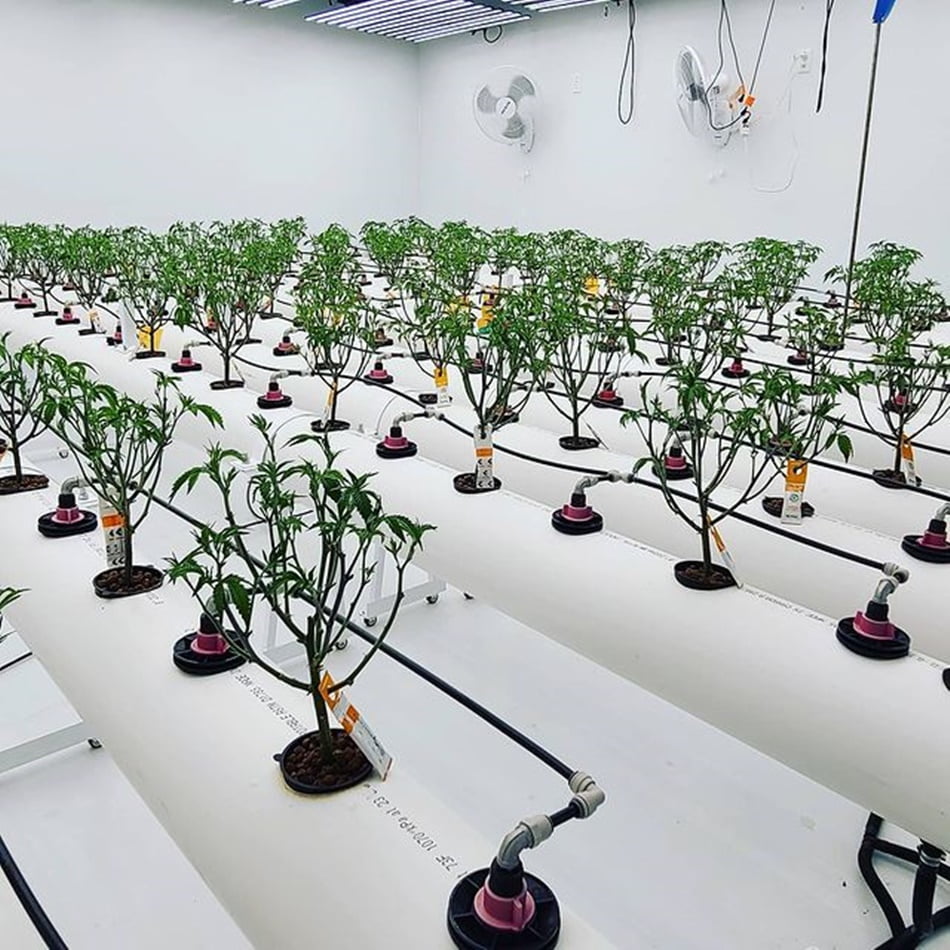
- Do not be in the business only for the money. Think of your products as goods and services to the community. Remember that you are growing cannabis for the consumers, so quality and safety should be a priority. There are markets that target more experienced cannabis users but there is also a dedication to the medical market. The goal is to have your consumers return after they get your product for the first time. If your products have poor quality or fall below the standards, then your consumers are not going to buy again. That is something to consider when you cannot move your products.
- Testing consistency and the effects of e-beam irradiation on cannabis quality. Cannabis testing is a concern for both the consumers and producers because it makes sure that every product that goes out is within the minimum quality and health safety standards. The current challenge is to have better consistency in testing results, as values differ based on the conditions they were tested on. Gordon points out that it would benefit the industry better if testing companies can all get in line with the methodologies for consistent, reliable results. E-beam irradiation, or the use of high energy electrons to sterilize cannabis products, need to be studied more because there seems to be a lack of hard scientific evidence on its effect on the quality of cannabis and cannabinoid compounds.
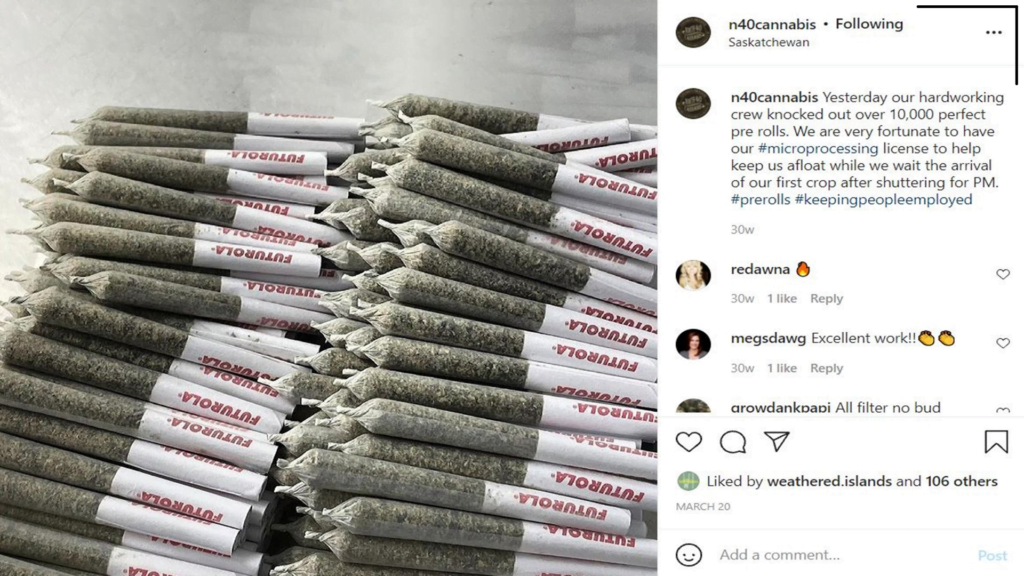
- Know the rules and regulations. Anyone going into the cannabis business needs to understand that getting your self- grown cannabis into the market is not that simple. There are a lot of stages that a cultivator has to go through to get a product out. Several licenses need to be applied for, depending on what the grower intends to do with cannabis. You need to go through a lot of stages and talk to many people to get your products to the consumers. It may be helpful to build relationships with relevant people during the process, even before you get licensed, for future collaboration and partnerships. For example, a micro cultivator developing a working relationship with processors with a sales license can go a long way in terms of getting to the markets at a provincial level. Collaborating with those who are already in the industry at the early stage of your business allows you to learn what they did well in terms of finding access to the market.
“There are several licenses in several stages and several hands that you’re going to have to go through in order to get to those consumers, at least in the first few years until the supply chain kind of sorts itself out.”
— David Brown, Regulatory Affairs Specialist, Content Manager & Advisor @ StratCann Services Inc.

For those who want to dig even deeper into the science, here are greater details about Electron beam radiation (or E-beam irradiation).
Electron beam radiation (or E-beam irradiation) is a technique that makes use of high energy electrons to inactivate or kill harmful microorganisms (or pathogens) in cannabis products. The energy from the beam excites atoms and molecules, which create free radicals that disrupt the chemical and metabolic processes in cells, causing damage to the pathogens. E-beam irradiation has been used to sterilize and prevent contamination of medical devices, pharmaceuticals, packaging, cosmetics, and toiletries, and has been shown to have no harmful effects on the quality of food and spice products. Unlike gamma beam irradiation, E-beam irradiation does not use radioactive material, which can be harmful to human health. It instead uses electricity to create the high energy beam, which means:
- E-beam does not leave residues after application (unlike fungicides).
- There’s no extreme heat or UV irradiation involved, so the cannabinoid and terpene profile is preserved as much as possible.
- E-beam is less expensive, faster, and easier to apply than UV sterilization.
Despite showing early success in decontaminating medicinal cannabis, E-beam irradiation is a relatively new technology and needs to be studied further. Issues like E-beam irradiation’s direct effect on the cannabinoid and terpene profile, optimization of doses, effect on the cannabis taste/smell and consumer satisfaction, consumer safety, and how to improve cost-effectiveness are yet to be studied further.

- Get your expectations in check. According to David Brown, a common cause of frustration among new license holders is that they do not have realistic expectations in terms of selling their product at a wholesale price. There are some expectations that early on, growers can get maybe $3.00 to $5.00 per gram. There are micro cultivators who can get these rates, but there are also a lot of micro cultivators getting a lot less. There are a whole host of reasons why this is so, but one of them is the limitations of the current market. The provinces, and therefore, the producers and sellers, focus on large batch products, which edges the market against small scale growers. This has been the case for a time, but we are seeing a shift now, and hopefully, it continues. The Ontario program is a great example of this change. This large influential province is starting to pivot towards the craft and micro growers. The uptake for small scale growers is a bit slow, but right now, Alberta, Saskatchewan, Manitoba, and Ontario, seem to favor micro growers. Hopefully, the situation will get better for micro growers. Until then, understanding the realities facing small-scale cultivation can make you prepared and get your expectations straight even before you start the business.
- Know the limitations of a small-scale grower in the provincial market. One other limitation for small-scale growers, especially those producing less than 100 kgs, is that some processors with a sales license may have trouble getting your products to the market when it is more efficient for them to deal with larger batches. As a small-scale cultivator or processor, it can be beneficial to work with a third party to get your products to the provincial shelves, but paying for the required provincial insurance is quite costly for an individual grower. To get around this problem, some growers partner with a processor that handles several micro growers at a time to spread that cost out. Vertically integrating your operation and trying to do everything by yourself is really a bad idea. Especially for a new grower, anyone in this industry should be willing to venture into new partnerships.

“Not trying to do everything yourself but being willing to have those partnerships, finding the right partners who can get you to market at least in the short term until you can start working towards those licenses yourself.”
— David Brown, Regulatory Affairs Specialist, Content Manager & Advisor @ StratCann Services Inc.
- Find opportunities and know threats to direct shipping from cultivators to consumers. The good news is that in the coming years, we are expecting to see provinces allowing cultivators to do direct shipping/drop shipping directly to the cultivators. This will open up more opportunities for micro cultivators and would be a factor that they can take into account when choosing their facility site. They may also consider this fact in their business plans, choosing to work
with someone with the appropriate federal licenses to ship the products directly to retailers or consumers at some point. A downside to drop shipping and the farm gate to consumers model is that, right now, provinces have not yet recognized the possibility of selling seeds and clones directly into the consumer market. This issue may potentially drop shipping for retailers and nurseries, serving as a kind of a direct sales location in terms of farm gate licensing for plants, seeds, and gardening equipment. As the provinces start to sort out some of their regulations, David thinks we will see more opportunities for consumers to go to the farms and buy plants and seeds to get around some of the challenges for producers when it comes to shipping live plants.
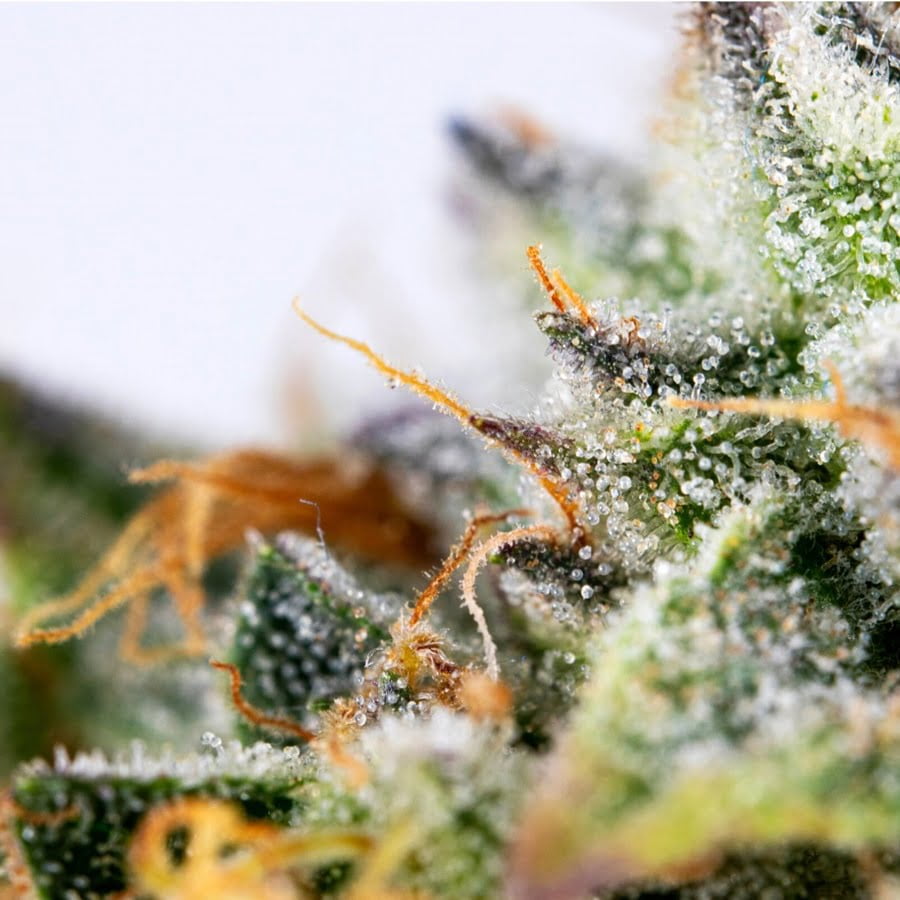
- Get the best cultivars. To be committed to the concept of craft growing or micro cultivation, the grower has to be committed to the concept of quality. Coming out with a superior product quality is a major selling point for micro cultivators, but there is more to it than just improving on processing steps and better packaging or presentation. A major factor to making an excellent product is using the best cultivar or genetic strain of cannabis you can get. For a long time, growers were limited to a few cultivars, but fortunately, Health Canada recently opened up its gates to allow better access to superior strains, an essential building block for micro cultivators.

“When Health Canada opened up the gates again to good genetics, that was really a starting point of the building block of working with micros for us. I mean, it was like we were limited for a long time and what we could access. And so that was a huge opportunity.”
— Myrna Gillis, Co-Founder & CEO @ Aqualitas Inc
- On working together with licensed producers. A collaboration between a licensed producer (LP) and a micro cultivator is an exciting opportunity to support each other in the industry. Myrna shares her experience as a partner for micro cultivators and likens it to the idea of a “treasure hunt.” They collaborate with the small-scale growers in their brand, Current and Current. Like an ocean current, Current and Current keeps the boats afloat (the micro cultivators) and invests in them for success, in a timely manner (the current time). They bring an ecosystem where folks work together and give the micro cultivators access to resources to develop the best products, like having access to better cultivars, growers, and sensory panels. Working with an LP partner like this can bring down costs for the micro grower because there is sharing of resources, overlap of processes, and no unnecessary expenses or duplication of efforts. For example, the samples do not have to be tested more than the required number of times because the sampling standards are uniform from the level of the micro grower down to the packaging department. It streamlines the process because samplings are done in accordance with their own QA department and follow the same standards. In addition to the production and QA support, having an LP partner with a national distribution network is valuable for any micro cultivator. There are a lot of opportunities when partnering with an LP, but there could be challenges as well. Sometimes, a product does not pass the sensory panels, and it can be disappointing for the grower. The certificate of analysis is important, but every product still has to undergo sensory panel testing. Sometimes, the product gets rejected and it could undergo some sort of tweaking to improve it. The QA has to vet it through the process before it goes to the final consumer because, first, the product has to be sustainable, and second, it has to have enough volume to support a constant stock-keeping unit (SKU). Otherwise, you can do “treasure hunting” to find better cultivars. The good thing about this is that the growers have options to help them reach the market. Having an LP partner who has a comprehensive plan and approach, who measures their success on how their partners succeed, and does not treat their partners as a sort of a one-off buy and go relationship is a role model on how to collaborate in this industry.
- Know the troubles of insurance and the strength of collaborations. A diligent and responsible grower does not put aside insurance and the security it can provide to the business. This is not easy in practice as insurance, along with testing, are two of the most exorbitant expenditures in the industry, according to Myrna. A grower might sell about less than a million dollars’ worth of products in a year to a provincial retailer, but they still need to carry $15 million worth of insurance. The problem is that there is no form of flexibility or proportionality in the insurance premiums between the largest companies versus the smallest companies. What the industry needs is equity in insurance and considerations in the reasonable risks between companies of different sizes. While a radical change in policy is the best solution to this problem, there are creative ways micro cultivators can band together, like having collective insurance among the growers or sharing common expenses. The important thing here is to make sure that your company’s risk profile is covered. Once again, we are emphasizing the value of collaboration as a micro-grower between growers when facing the same adversities. In Myrna’s case, this is why having long-term relationships with micro cultivators and not just buying off their COA or buying off the marketplace works for them.
- Familiarize with the OCS Craft Designation Initiative. Peter Shearer shares Ontario Cannabis Stores’s Craft Designation Initiative. This exciting project highlights products from small-scale production sites that employ artisanal, hand-crafted procedures and the processes to bring out exceptional dried cannabis and pre-rolls. What craft cannabis should be stays firmly rooted to the definition of craft cannabis and the expectations of consumers. Craft cannabis is exceptionally small in terms of production compared to the mainstream producers, partly because it is handcrafted. However, it has its own special value in the market as craft growers convert more legacy consumers by offering products that reflect artisanal legacy production techniques. It offers diversity to an otherwise plain market by breathing life into an assortment of products that consumers can choose from. What OCS does in this initiative really is to provide small-scale growers a platform to tell their unique stories. Ultimately, craft cannabis is about connecting the consumer to the craftsman grower, the person who made the product, in a more profound sense.
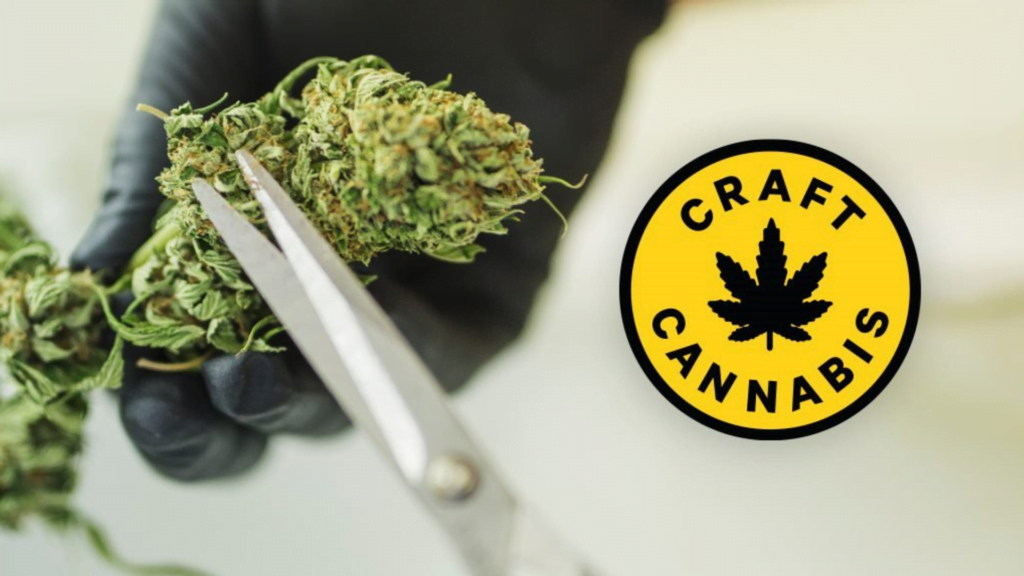
Two factors define the criteria for craft cannabis – the size of the facility and the processing criteria. In craft cannabis, the size of the facility is measured not by its physical dimensions, but by the annual dried flower output of the facility. This refers to yields less than 10,000 kilos per year. In practice, however, the usual yields of craft cannabis (about 6,000 kilos per year) never reach this number. Having a limit like 10,000 kg allows room for craft growers to scale up their operations while maintaining the manual processing techniques. On the other hand, the processing criteria considers the facility’s methodology for drying, trimming, and packaging. The Craft Designation Initiative encourages the use of sustainable packaging and product transparency, like data on terpene profiles and total volume. The organizers go through the current assortment of products to ensure that they fall under the craft designation. As a minimum requirement, all craft products need to be hang-dried, hand-trimmed, and hand-packaged. This initiative values what legacy consumers view as a craft product, a product grown by a small group of passionate people and prepared by their own hands. The initiative unfolds in two approaches. One is via e-commerce, which will likely have a permanent collection of craft products. The second is via retailers ordering through the OCS vendor portal.
The value of craft cannabis extends beyond the product itself. It is driven by who the consumers want to support. People choose craft growers who they can relate to. They also decide based on their personal histories as cannabis consumers.
“OCS has developed craft designation, really to highlight products from smaller scale production sites that employ artisanal hand-crafted procedures and processes when producing dried cannabis, and pre-rolls. That definition is firmly rooted in the expectations of consumers as to what craft products should be.”
— Peter Shearer, Senior Category Manager at Ontario Cannabis Storer
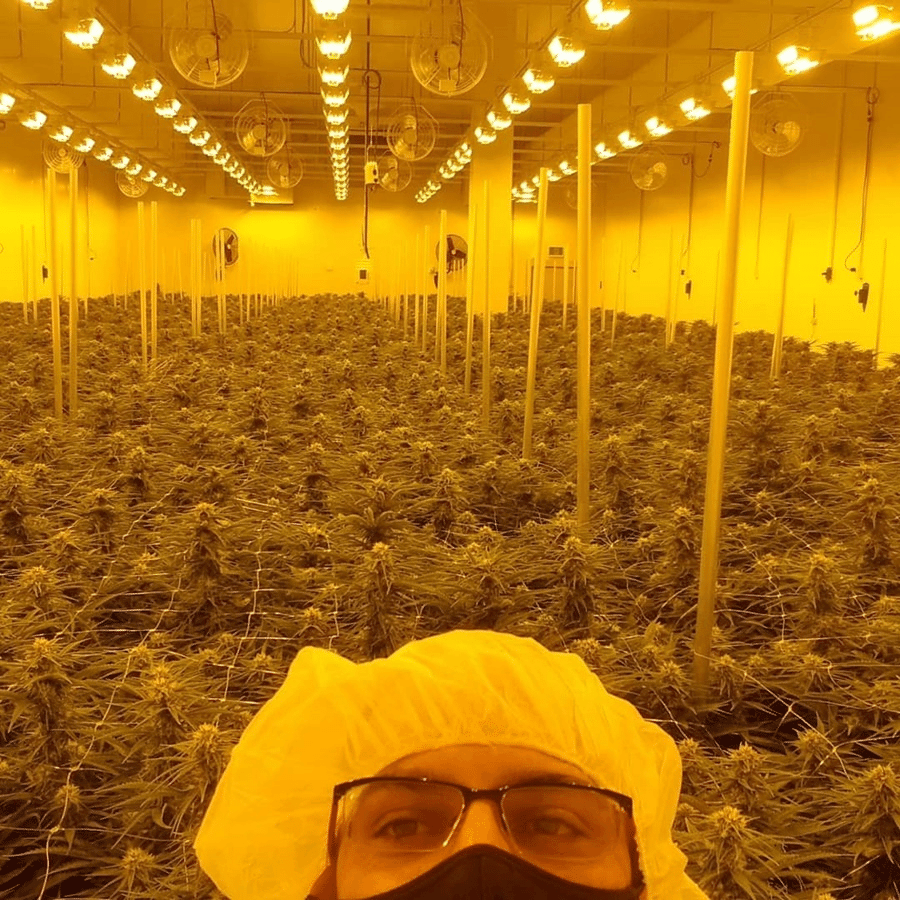
14. Remember: saying it’s “craft” does not necessarily mean high quality cannabis. Craft cannabis can only say something about the size of the facility, rather than the quality of the product. Even the most passionate growers can test all methodologies and still not hit certain qualitative metrics. Craft growers can produce craft cannabis that is bad. Small-scale, manual technologies are more likely to bring out high quality cannabis, but that is not necessarily true all the time. This might seem like failure, but that is not entirely terrible at all, because we need to think that innovation also involves ruling out things that do not work.

“I think craft cannabis and small production manualized methodologies are certainly conducive to high quality cannabis, but I don’t think craft equals high quality necessarily. I think it speaks to who made it, how they made it.”
— Peter Shearer, Senior Category Manager at Ontario Cannabis Storer
15. The road to moving forward. Innovations in the art and science of growing cannabis keep changing the landscape for craft growers everywhere. The processes and techniques may change, but for craft growers, there is always a value proposition with consumers wanting to support people that they feel are aligned with their values. Still, there are challenges in the cannabis industry that need improvement. Peter says that there seems to be a lot of producers having excess inventory, which causes prices to go down, leading to producers having trouble making money. Of course, there are other reasons why producers have a difficult time turning a profit, but it impacts their ability to hold up higher quality products that do cost more time and require a larger manual labor workforce. There are other unconventional ideas to bring out quality cannabis products like meeting microbial standards without needing irradiation, fertilizing the soil with organic inputs but without synthetic chemicals, or having an assortment of cultivars or genetic strains. There are also innovations on the hang-drying and the curing processes to provide maximum preservation of the terpenes. A lot of pioneering scientific work on volatile terpenes and how to preserve them has been going on. Processors can have some flexibility on the techniques, like hand-processing or automation, but the priority still is the preservation of the terpenes. These are just some of the upcoming opportunities for craft growers.

“[I] like to offer my services. And when I say services, I mean, free services anybody ever wants to reach out to me I’m available to help with anybody’s questions, or anything that they need.”
— Gordon Nichol, Owner and President of North 40 Cannabis Limited
The panel ended the session by offering their services and opening themselves to collaboration with craft growers. The road may be rocky for small-time growers like you, but passion and perseverance will give a great edge in the cannabis industry.
Watch this session at The Grower’s Source Expo below.
Featured Image Credits: Aqualitas Inc.

Want to keep the discussion going?
Log onto The Grower’s Source App to ask a question of our group of experts, or to read up on the latest comments on this topic.
You can also engage your fellow master and hobby growers about many other cannabis topics on your Grower’s Source App.

CONNECT
Connect and maintain relationships between you and other Canadian cannabis industry growers.
COLLABORATE
Overcome challenges together with your fellow growers, learn, develop collective knowledge and a global competitive edge.
GROW
Grow better, aim for sustainability, quality, and cost-effectiveness.




